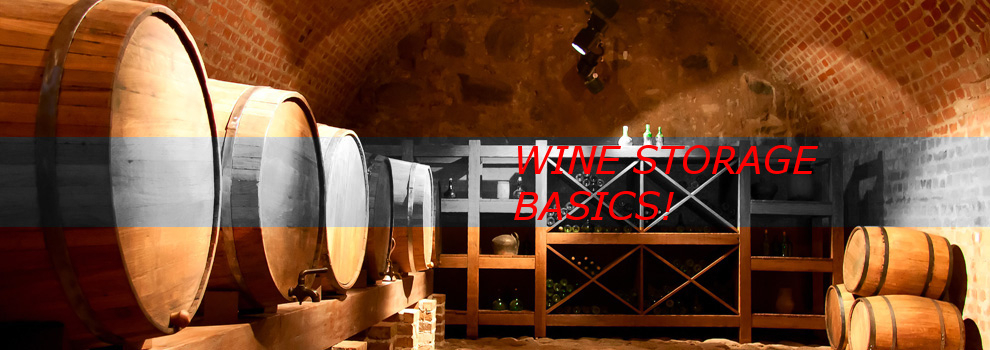Tip of the month-Wine Storage Basics!

“Many a potentially wonderful wine has been lost to improper cellaring techniques”
Wine Storage BasicsWhy do you keep your wine upright for a couple days after bottling?After you bottle your wine (or if purchased commercially) keep your wine upright for the first 2 to 5 days in the location where you intend to store it. This will allow your wine to acclimatize to the temperature of the room. In other words, you want the wine to be the same temperature of the room before you lay it on its side. This usually takes about 48 hours.
After that, always store your wine on its side to keep the cork moist. The cork must always be in contact with the wine in order for it to expand and thus create a seal so as to not allow air into the bottle. If not, you will eventually lose your wine to oxidation.
Store your wine in a cooler, dark place. Remember 55-65F is ideal for long term storage, but don’t panic if it is 54F or 72F degrees either.
The enemy is Temperature fluctuations!
WHY:
When the temperature is going up and down the wine inside is actually expanding and contracting in the bottle. This movement, ever so slightly, moves the cork back and forth thus breaking the seal and allowing a minute amount of air to enter. When this happens, you might as well uncork and cork your bottle over and over.
Did you know?…storing your wine at over 80 degrees Fahrenheit will spoil your wine in about a month.
The conditions in which a bottle of wine is kept can have a huge impact on the quality of the wine when you finally come to drink it.
Temperature is the first important factor. Wine should be kept at a constant temperature between 55 and 65°F (14-18°C). Cooler temperatures make the wine age slower, which increases the complexity and character of the wine whereas wine that is stored at higher temperatures causes the aging process to accelerate, which causes it to lose out on the subtle changes that happen when it ages slowly.
Humidity levels are another important factor in wine storage. The ideal humidity level is between 50% and 80%. Higher levels can promote the growth of mold, and lower levels can cause the wine to evaporate, even in a sealed bottle. Finally, wine should be stored in a dark space. Light can cause the chemicals inside the wine to breakdown and react with one another.
Do not constantly turn your wine. This will only mix into your wine the ‘shedding’ which is a mix of tannins and pigments which can taste bitter. Heavier red wines will sometimes “shed” (leave a slight residue on the inside of the bottle). This is normal. Simply decant your wine.
Do not store your wine directly on a cement floor. Put them in racks or on a thick piece of wood to insulate from the cold floor.
Do not store your wine on heated floors.
Do not store your wine on, or near things that vibrate. The constant movement will constantly stress or shock your wine.
IF…you are storing your wine in a cold cellar be sure to make sure it is insulated to stabilize the temperature fluctuations between the seasons. In winter, cold rooms can get down to the temperature of your refrigerator which can be too cold for long term cellaring and it will retard or slow down the aging of your wine.
And…remember most wines will benefit or improve with some aging. Some more than others, reds generally lasts longer than whites…but we will tackle that at a later date. KEEP POSTED.
